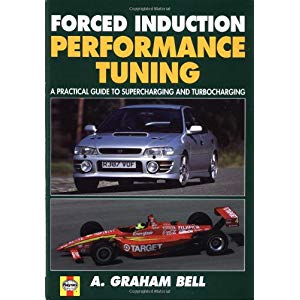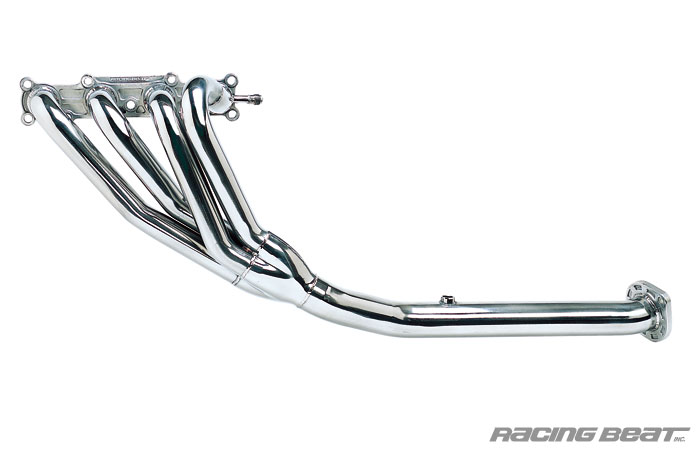Header tech
Since the MSM for some reason did not include a N/A header I need to get one of this things for my new Rotrex plans.
<div style="margin-bottom: 0px; margin-left: 0px; margin-right: 0px; margin-top: 0px;">I did some research online to gain some knowledge about how a header actually works.</div><div style="margin-bottom: 0px; margin-left: 0px; margin-right: 0px; margin-top: 0px;">I also used the holy bible of forced induction :</div><div style="margin-bottom: 0px; margin-left: 0px; margin-right: 0px; margin-top: 0px;">“Forced Induction Performance Tuning” by A. Graham Bell. It’s the best and has some interesting info on recommended pipe OD for different applications including supercharging.</div><div style="margin-bottom: 0px; margin-left: 0px; margin-right: 0px; margin-top: 0px;"> </div><div>
</div><div>
</div>
<div style="margin-bottom: 0px; margin-left: 0px; margin-right: 0px; margin-top: 0px;"><div style="margin-bottom: 0px; margin-left: 0px; margin-right: 0px; margin-top: 0px;">Why do a header matter at all ? </div></div><div style="margin-bottom: 0px; margin-left: 0px; margin-right: 0px; margin-top: 0px;"><div style="margin-bottom: 0px; margin-left: 0px; margin-right: 0px; margin-top: 0px;">Its primary job is obviously to transport the hot exhaust from the cylinders and away from the engine.</div></div><div style="margin-bottom: 0px; margin-left: 0px; margin-right: 0px; margin-top: 0px;"><div style="margin-bottom: 0px; margin-left: 0px; margin-right: 0px; margin-top: 0px;">The less obvious job is to use the exhaust pulses from each bang in the individual cylinders to create a scavenging effect on the off phase cylinders. This will raise VE = more TQ and power.
<div>
</div><div>The problem with this fancy scavenging effect is that it only happens at a certain RPM range dependent on 3 main factors in no particular order:
<div><div style="margin-bottom: 0px; margin-left: 0px; margin-right: 0px; margin-top: 0px;">- Design/layout (4-1 or 4-2-1)</div></div><div></div></div><div>- Length of primaries (and secondary )</div><div>- Pipe diameter</div><div>
There are other factors as well like tapered and stepped pipes for anti reversion, collector design, back purged welds etc which I wont cover.
</div><div>Design
There are basically two types of header design; 4-1 and 4-2-1 ( or tri-y as the yanks call them) </div>A 4-1 header has all 4 primary pipes merged into one collector, ideally with equal length.
<div style="margin-bottom: 0px; margin-left: 0px; margin-right: 0px; margin-top: 0px;"><div style="margin-bottom: 0px; margin-left: 0px; margin-right: 0px; margin-top: 0px;"><div style="margin-bottom: 0px; margin-left: 0px; margin-right: 0px; margin-top: 0px;">The 4-2-1 header on the other hand has 3 collectors. </div></div></div><div style="margin-bottom: 0px; margin-left: 0px; margin-right: 0px; margin-top: 0px;"><div style="margin-bottom: 0px; margin-left: 0px; margin-right: 0px; margin-top: 0px;"><div style="margin-bottom: 0px; margin-left: 0px; margin-right: 0px; margin-top: 0px;">They do this by merging the cyl 1 and 4 primaries and 2 and 3 primaries into two primary collectors and having the two secondary pipes merging into a final collector. This makes it possible to tune exhaust scavenging for two RPM ranges which makes for a broader power band….. in theory.
Some fine examples of 4-1 (left) and 4-2-1 (right).</div></div></div><div style="margin-bottom: 0px; margin-left: 0px; margin-right: 0px; margin-top: 0px;"><div style="margin-bottom: 0px; margin-left: 0px; margin-right: 0px; margin-top: 0px;"><div><div class="separator" style="clear: both; text-align: center;">
 </div><div style="clear: left; float: left; margin-bottom: 1em; margin-right: 1em;"></div>
</div><div style="clear: left; float: left; margin-bottom: 1em; margin-right: 1em;"></div>
Pipe length</div></div></div>The length of the pipe between the exhaust valve and the merge collector(s) will decide when the low pressure end of the exhaust pulse will travel back up to the other cylinder(s). This will create a low pressure zone outside the exhaust valve that will ideally reach the exhaust valve when it opens and help suck out the exhaust and draw fresh gas/air mixture into the cylinder from the cam overlap ( if any…).
A short pipe length will move the power band towards red line while a longer pipe would optimize the lower rpm range. This length are tuned according to the exhaust pressure wave velocity (1500-1700 ft/sec) and not the exhaust gas velocity.
Pipe diameter
The pipe diameter will influence the exhaust gas velocity. This is important as peak torque will happen at a gas velocity of 240-250 ft/sec. Increasing pipe diameter will reduce gas velocity trough the RPM range and raise peak horsepower RPM.
<div>Pipe length and diameter influence each other. The length will rock the power curve of the engine around the point of maximum TQ as shown in the diagram below:</div><div class="separator" style="clear: both; text-align: center;"> </div><div class="separator" style="clear: both; text-align: left;">As the pic says. Long pipes will lift low rpm power while short pipes lift top end power. The V8 crowd call the latter “shorty headers”.</div><div class="separator" style="clear: both; text-align: left;">
</div><div class="separator" style="clear: both; text-align: left;">As the pic says. Long pipes will lift low rpm power while short pipes lift top end power. The V8 crowd call the latter “shorty headers”.</div><div class="separator" style="clear: both; text-align: left;">
</div><div class="separator" style="clear: both; text-align: left;">But how will a supercharger influence things ? A stock BP 1.8 with a 99 head flows ~200 CFM according to internet search. The stock header are probably tuned for that kind of flow and will reach the magic exhaust gas velocity of 250 ft/sec some place around 6K rpm or earlier for drive-ability. An increase in displacement or forced induction will produce more exhaust gas and should be matched with a larger diameter header to avoid peak horsepower rpm being moved lower down the RPM range due to hitting optimal gas velocity earlier.</div><div class="separator" style="clear: both; text-align: left;">We can roughly estimate the needed engine flow for a give hp if we know the Brake Specific Fuel Consumption, Air/Fule ratio and horsepower target. ( math here )</div><div class="separator" style="clear: both; text-align: left;">A miata has ~ 0.55 BFSC and ~ 12:1 A/F for a slightly aggressive tune with a SC.</div><div class="separator" style="clear: both; text-align: left;">To produce 400 hp the engine would then need to flow at least 640 CFM which is more than 3 times the stock CFM.</div><div class="separator" style="clear: both; text-align: left;">
</div><div class="separator" style="clear: both; text-align: left;">Mr. Graham Bell recommends these sizes for engine fitted with a compressor. The 1.9 BP would be the numbers for 500cc. 2” pipes for a 4-1 header on such a small displacement engine sounds a lot.</div><div class="separator" style="clear: both; text-align: left;">
</div><div class="separator" style="clear: both; text-align: left;"> </div><div class="separator" style="clear: both; text-align: left;">
</div><div class="separator" style="clear: both; text-align: left;">
</div><div class="separator" style="clear: both; text-align: left;">I will not spend a fortune on a new header. I’ll probably pick the cheapest one that is closest to what I will need based on the information I have collected in this article. I think the most important thing will be pipe diameter. Tuned pipe length and 4-2-1 design wont help if a small pipe diameter is choking the engine.</div><div class="separator" style="clear: both; text-align: left;">
</div><div class="separator" style="clear: both; text-align: left;">
</div><div class="separator" style="clear: both; text-align: left;">
</div><div class="separator" style="clear: both; text-align: left;">
</div><div class="separator" style="clear: both; text-align: left;">
</div><div class="separator" style="clear: both; text-align: left;">
</div><div class="separator" style="clear: both; text-align: left;">
</div><div>
</div><div>
</div><div>
</div></div></div>
<div style="margin-bottom: 0px; margin-left: 0px; margin-right: 0px; margin-top: 0px;">
</div><div style="margin-bottom: 0px; margin-left: 0px; margin-right: 0px; margin-top: 0px;">
</div>

Comments